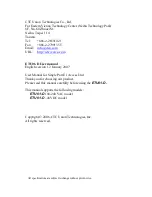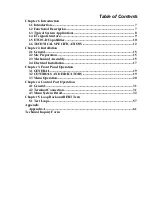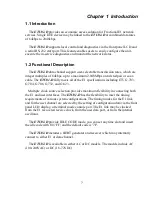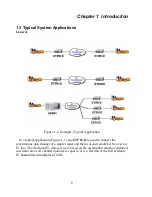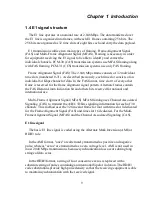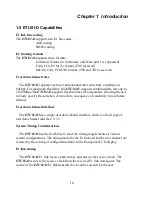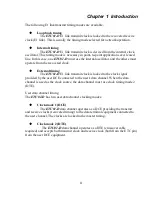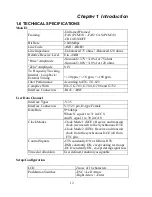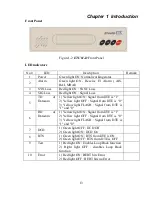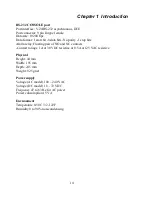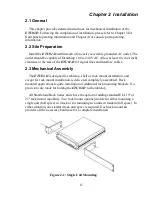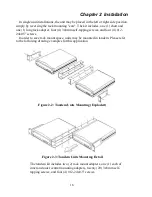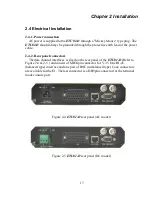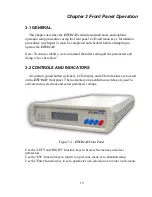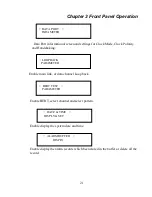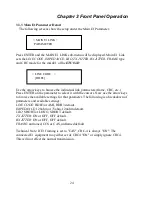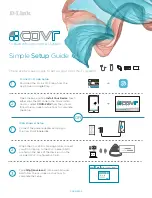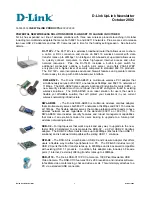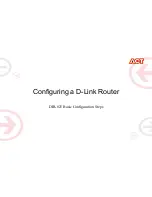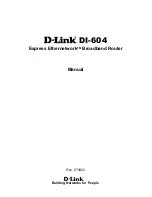
Chapter 1 Introduction
9
1.4 E1 signal structure
The E1 line operates at a nominal rate of 2.048Mbps. The data transferred over
the E1 line is organized into frames, with each E1 frame containing 256 bits. The
256 bits are organized as 32 time slots of eight bits each and carry the data payload.
E1 transmissions utilize two main types of framing: Frame Alignment Signal
(FAS) and Multi-Frame Alignment Signal (MFAS). Framing is necessary in order
for equipment receiving the E1 signal to be able to identify and extract the
individual channels. PCM-30 (CAS) transmission systems use MFAS framing along
with FAS framing. PCM-31 (CCS) transmission systems use only FAS framing.
Frame Alignment Signal (FAS) The 2.048 Mbps frame consists of 32 individual
time slots (numbered 0-31). As described previously, each time slot consists of an
individual 64 Kbps channel of data. In the FAS format, time slot 0 of every other
frame is reserved for the frame alignment signal pattern. Alternate frames contain
the FAS Distant Alarm indication bit and others bits reserved for national and
international use.
Multi-Frame Alignment Signal (MFAS) MFAS framing uses Channel Associated
Signaling (CAS) to transmit the A/B/C/D bits signaling information for each of 30
channels. This method uses the 32 time slot frame for mat with time slot 0 dedicated
for the Frame Alignment Signal (FAS) and time slot 16 dedicated. For the Multi-
Frame Alignment Signal (MFAS) and the Channel Associated Signaling (CAS).
E1 line signal
The basic E1 line signal is coded using the Alternate Mark Inversion (AMI) or
HDB3 rule.
In the AMI format, "ones" are alternately transmitted as positive and negative
pulse, whereas "zeros" are transmitted as a zero voltage level. AMI is not used in
most 2.048 Mbps transmissions because synchronization loss occurs during long
strings of data zeros.
In the HDB3 format, a string of four consecutive zeros is replaced with a
substitute string of pulses containing an intentional bipolar violation. The HDB3
code substitutions provide high pulse density so that the receiving equipment is able
to maintain synchronization with the received signal.
Summary of Contents for ETU01-D
Page 2: ......
Page 4: ......
Page 6: ...Table of Contents ...
Page 56: ...Chapter 4 Control Port Operation 56 This page left blank intentionally ...
Page 60: ...Chapter 5 Loopback and BERT Tests 60 BERT TEST E1 ...
Page 62: ...Appendix A 62 ...
Page 65: ......



